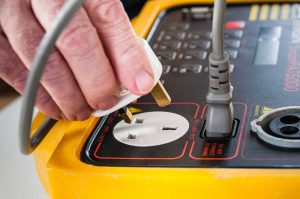We send our little ones to school with the confidence that they are in a safe place. The teachers, nursery workers, teaching assistants etc all work hard to ensure they are safe and as happy as can be. But what about the actual building itself. How would you feel if your child was attending a school that wasn’t safe? These days, most children will have access to laptops, computers and other electrical equipment to help them in their learning. But how do we know this electrical equipment is safe?
School children aren’t exactly known for their attention or care of appliances. As there are hundreds of them using a school’s electrical appliances on a regular basis, the chance of damage to those appliances is increased dramatically.
PAT Testing is the best way to manage your electrical appliances to ensure everybody is safe. It helps keep track of any wear and tear and highlights anything that is liable to become a future threat. Regular testing will help you comply with the Electricity at Work Regulations 1989 and proves that you have methods in place to maintain your electrical devices on a regular base ensuring they are as safe as can be.
There is no set specific rule for the frequency of PAT testing. However, if you have no maintenance system in place, it is likely that faults will be missed, increasing the likelihood that someone could get hurt.
How often do schools need to PAT Test?
As a minimum requirement, all Class I equipment in schools should be PAT tested every 12 months. Class II equipment should be tested every 48 months. However, it is a good idea to carry out intermittent tests on any items that are heavily used or any new appliances that are brought into the school.
What is Class I and Class 2 equipment?
Class I: this refers to items where protection is provided by a combination of insulation and use of the mains Earth. The user is protected from electric shock by the plastic insulation of the connector. When PAT testing Class I appliances, the Earth continuity and insulation resistance tests are both carried out.
Class II: this refers to items where the user is protected by at least two layers of insulation. For this reason, Class 2 appliances are also known as ‘double insulated’ and therefore do not require an earth connection.
Which appliances need to be tested in my school? 
Staff Room: does your staff room have a kettle? This is a Class I item so should be tested every year. How about a radio, TV or stereo? These are Class II items so need to be tested every 48 months.
Art Department: typical items may include glue guns which are Class I.
IT Department: IT equipment used by pupils, such as computers or laptops, could be used every day. Therefore, these items should be tested more frequently.
Office: Photocopiers, monitors and double insulated equipment can be tested every 2 to 4 years
School Kitchen: catering equipment such as food mixers, toasters, electric scales etc should be tested every 12 months or less if possible as these items are likely to be used daily and are situated in a more high-risk environment.
Cleaning cupboards: items like vacuum cleaners may need to be checked more frequently than recommended. This is simply because they are used more often.
Do I need to keep a record of PAT tests carried out in my school?
Keeping a record of your PAT testing is not actually a legal requirement but it is good practise and essential for schools to have document evidence of the completion of any PAT testing.
PAT testing is a necessary part of Health and Safety compliance in your school. Don’t let a lack of testing and poor housekeeping become a lesson in your school that results in fire. Teach all staff to be extra vigilant in carrying out regular visual checks and if you are unsure if something is safe, take it out of use and have it checked.
